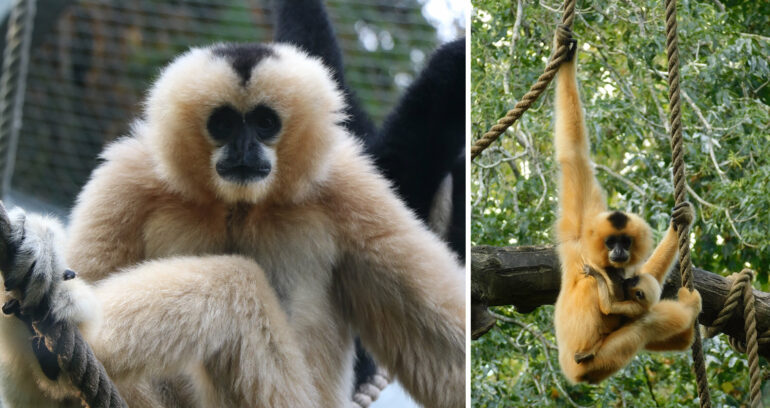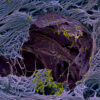Female crested gibbons display jerky, almost geometric patterns of movement. Researchers from Heinrich Heine University Düsseldorf (HHU), Oslo in Norway and Paris have studied these conspicuous movements, which are comparable to human dances.
In the journal Primates, they describe the structure of the dances, their rhythm and the contexts in which the dances occur.
Zoo visitors have perhaps already seen how female crested gibbons perform conspicuous sequences of twitching movements involving the rump, arms and legs. This behavior can be observed in zoos and also in the wild.
Crested gibbons belong to the family of small apes. There has been little scientific interest in this special display to date. Dr. Kai R. Caspar from the Institute of Cell Biology at HHU, Dr. Camille Coye from the Institut Jean Nicod in Paris and Professor Dr. Pritty Patel-Grosz from the University of Oslo in Norway have now analyzed this striking behavior of the gibbons in more detail. They focused on the sequence of movements, rhythm and intentionality—i.e. the circumstances in which the gibbons perform the dances.
Dr. Coye, lead author of the study said, “Our examination of video material from various zoos and rescue centers proves that all species of crested gibbons perform these dances. They represent a common and intentional form of visual communication.” It is an indicator of the intentional usage of the dances that the gibbons often check during a performance whether the audience is paying attention.
Professor Patel-Grosz: “Only sexually mature females dance. Within species, the dances are evidently primarily used to solicit copulation, but they also occur in a wide range of situations related to non-sexual arousal or frustration and are also frequently directed at humans when performed in captivity in zoos.”
The researchers also observed that the dance movements display a grouping structure. Dr. Caspar: “They are often organized in groups of up-down or left-right movements and they follow a clear rhythm. Depending on the individual, the movement sequences may vary in complexity.”
The researchers can see similarities between crested gibbon and human dances, but presume that they evolved independently of each other. This conclusion is based, among other things, on the fact that other species of apes do not display this type of behavior.
Furthermore, gibbon dances are also likely to be innate, while human dance is primarily determined by culture. Human dance is also frequently accompanied by music or song, while this is never the case with gibbons.
“The dance behavior was noticed by chance, but is now being reported from various zoos,” says Dr. Caspar. Dancing crested gibbons can be seen at Duisburg Zoo and Burgers’ Zoo in Arnhem in the Netherlands, among other locations.
More information:
Camille Coye et al, Dance displays in gibbons: biological and linguistic perspectives on structured, intentional, and rhythmic body movement, Primates (2024). DOI: 10.1007/s10329-024-01154-4
Provided by
Heinrich-Heine University Duesseldorf
Citation:
Gibbon dances provide model to investigate the use of gestural signals in primates (2024, October 13)



